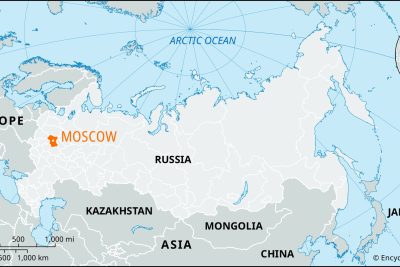
Unicode Development: Key Facts and Insights Explained

Unicode is an essential element in the landscape of modern digital communication. As we navigate an increasingly globalized world, the **unified code** has emerged as an indispensable tool for ensuring seamless interaction across diverse languages and scripts. Its importance cannot be understated, as it has made it easier than ever to display and share text internationally, accommodating a multitude of cultures and languages.
The development of Unicode has played a transformative role in the way we engage with technology and multimedia. By providing a single, cohesive standard for character representation, **Unicode** supports everything from digital documents to web applications. The **uni-code** standard has seen vast evolution, with the Unicode Consortium continuously working to broaden its scope and improve its functionality. In the following sections, we will explore the key facts and insights about Unicode, its significance in global communication, and its rich history.
- The Importance of Unicode in Global Communication
- History and Evolution of Unicode
- The Unicode Consortium: Roles and Responsibilities
- Key Features of the Unicode Standard
- Major Milestones in Unicode Development
- The Structure of Unicode: Planes and Blocks
- Unicode and Multilingual Support
- Technical Aspects: Encoding Forms and Standards
- The Integration of Emojis in Unicode
- Challenges and Future Directions for Unicode
- Conclusion: The Impact of Unicode on Digital Text Representation
The Importance of Unicode in Global Communication
In today's world, clear communication across multiple languages is vital. **Unicode** has established itself as the go-to solution for achieving this objective. By supporting an expansive character set, **unicodes** allow users from different linguistic backgrounds to communicate effortlessly. It enables a wide range of cultures to be represented digitally, preserving their scripts and idiosyncrasies.
Moreover, the **unicode** standard aids in preventing confusion and errors that arise from mixed encoding systems. A fundamental issue with earlier systems was that they could only handle a limited number of characters, which often led to incompatible text displays, commonly seen in documents containing multiple languages. **Unicide** seeks to eliminate such barriers, offering a uniform approach that promotes accessibility and inclusivity.
History and Evolution of Unicode
The origins of **unicode** date back to the late 1980s, when the need for a comprehensive character encoding standard became apparent, particularly with the rise of the Internet. This need led to the formation of the Unicode Consortium in 1991, whose mission was to develop and promote the **unicode** standard.
Since its inception, **unicode** has undergone numerous revisions, with each version expanding the character set and improving the standard's capabilities. The initial version of **Unicode** included only 7,000 characters; however, as of now, the latest version comprises over 100,000 characters. This dramatic growth reflects the increasing necessity for digital representation of diverse languages and antiquities, as well as the gradual integration of new script systems.
The Unicode Consortium: Roles and Responsibilities
The **Unicode Consortium** is a non-profit organization tasked with the ongoing development and maintenance of the **unicode** standard. It is composed of various member organizations from different industries, including technology, telecommunications, and academia. The Consortium's responsibilities extend beyond merely updating the character set; it encompasses creating guidelines, technical documentation, and support resources to encourage widespread adoption of **unicode**.
By collaborating with other organizations, the Unicode Consortium ensures that various platforms and software applications remain compliant with the **unicodes**. The Consortium also plays a crucial role in engaging with communities to understand their needs and to prioritize new character additions. This collaborative effort has fostered an environment where innovations in text representation can flourish.
Key Features of the Unicode Standard
One of the standout features of the **unicode** standard is its ability to represent characters from virtually all writing systems around the globe. This comprehensive support is what makes **unicdoe** a powerful tool for software developers and users alike. Additionally, **unicdes** are designed to be backward compatible with ASCII, allowing ancient systems to integrate seamlessly with modern applications.
Another key aspect is that **unicode** uses a unique code point system, allowing each character to be assigned a distinct number. This coding also enables encoding transformations, maintaining data integrity regardless of the platform. Moreover, Unicode's approach to handling text direction supports languages that read from right to left, further showcasing its flexibility.
Major Milestones in Unicode Development
- 1991: The first official version of **unicode** was released.
- 1996: Unicode 2.0 was introduced, which expanded the character set significantly.
- 2000: The adoption of Unicode as an international standard (ISO 10646).
- 2010: Introduction of the emoji block, marking the beginning of popular use of emojis in **unicode**.
- 2020: Unicode 13.0 is released, adding over 600 new characters and symbols.
The Structure of Unicode: Planes and Blocks
The **unicode** standard organizes characters into different **planes** and **blocks**. Each plane can contain up to 65,536 code points, and Unicode currently has 17 planes, which allows for a vast amount of characters to be defined within the system. Each plane is divided into blocks based on linguistic or functional similarities, making it tangibly easier to navigate and utilize.
For instance, the Basic Multilingual Plane (BMP) contains the most commonly used characters, while additional planes are reserved for less frequently used glyphs, historic scripts, and emojis. This meticulous structure allows developers and users to locate and implement required characters efficiently, accommodating both modern and classical languages.
Unicode and Multilingual Support
Imagine you are designing a website that caters to a global audience. The importance of **unicode** in achieving multilingual support cannot be overstated. With **uniocde** standards in place, developers can easily include text in numerous languages without the challenges associated with legacy encoding systems.
Furthermore, the **unicode** standard supports properties such as casing, normalization, and text shaping, crucial for correctly rendering text in various languages. For instance, it can handle the complexities of languages that have multiple forms for characters, ensuring accurate representation across most digital platforms. This is a significant reason why **unicode** is often referred to as the future-proof solution for multilingual communication.
Technical Aspects: Encoding Forms and Standards
Understanding the **unicode** encoding forms is essential for developers. Three primary encoding forms exist: UTF-8, UTF-16, and UTF-32. Each of these encoding forms serves different purposes, enabling compatibility with different systems and applications.
- UTF-8: The most popular format, it compresses characters into one to four bytes and is commonly used for web content.
- UTF-16: This format uses two bytes for most characters and is typically used for internal processing in programming languages.
- UTF-32: This straightforward format assigns four bytes for every character; however, it is less common due to its size.
Each encoding form has its advantages and challenges, and understanding these concepts ensures that developers can implement **uni-code** correctly, enhancing the user experience and ensuring digital content is accessible to all.
The Integration of Emojis in Unicode
The rise of emojis has revolutionized the way we convey emotions and ideas in digital communication. The inclusion of emojis into the **unicode** standard significantly bolstered its relevance in modern messaging. Emojis are now recognized as integral parts of the written language, allowing for nuanced expression beyond words.
The Unicode Consortium carefully curates and approves new emojis, reflecting changes in culture, technology, and society. This process ensures that emojis remain relevant to users worldwide, making **unicdoe** a continually evolving platform. The adaptation of emojis into digital platforms further exemplifies how **unicode** responds to user needs.
Challenges and Future Directions for Unicode
While the **unicode** standard has achieved remarkable progress, it does face challenges. As new scripts and characters emerge with changes in technology and society, the **Unicode Consortium** must constantly update the standard to accommodate these changes. Balancing the need for new inclusions while maintaining compatibility is a continuous challenge.
Furthermore, as global communication increases, the complexity of representing languages with unique grammatical and phonological rules also poses a challenge. Future directions for **unicode** include expanding its character inventory and improving support for less widely used languages.
Conclusion: The Impact of Unicode on Digital Text Representation
In conclusion, the evolution of **unicode** has significant implications for digital text representation. By providing a standardized and comprehensive encoding system, **unicode** has facilitated global communication across diverse languages and cultures. Its impact is profound, ensuring that technology remains inclusive and accessible to everyone.
As we navigate through the complexities of a digitally connected world, the continued development and adoption of **unicode** will play an essential role. Understanding its history, structure, and technical aspects is vital as society moves toward a future where **unicode** will remain a foundational element in facilitating effective communication.
Did you find this article helpful? Unicode Development: Key Facts and Insights Explained See more here Education.
Leave a Reply






Related posts